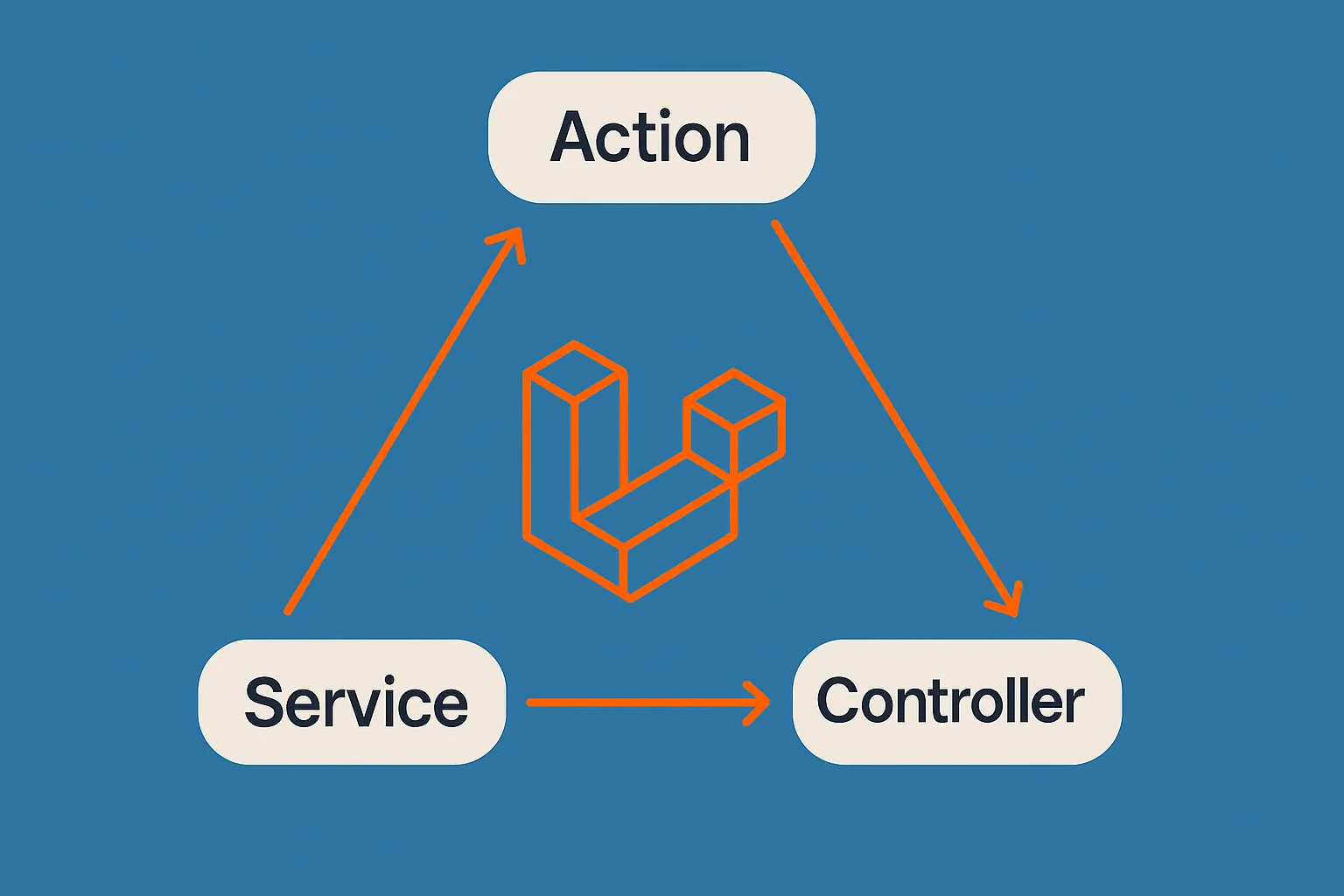Understanding the Action–Service Pattern in PHP
Learn how to structure your Laravel application using the Action–Service pattern for better code organization, reusability, and testability.

Understanding the Action–Service Pattern in PHP
When building modern PHP applications—especially in Laravel—maintaining a clean architecture becomes critical as your project grows. One highly effective way to achieve this is by using the Action–Service pattern, which helps you separate concerns, improve reusability, and simplify testing.
In this post, we'll break down the core idea behind this pattern, show how to implement it in Laravel, and explain when and why you should use it.
💡 What Is the Action–Service Pattern?
At a high level:
- Action classes handle a specific, atomic task — typically tied to a controller endpoint.
- Service classes encapsulate reusable business logic that might be needed across multiple actions or contexts.
This structure helps keep your controllers thin, your logic well-organized, and your system more maintainable.
🧱 Folder Structure
A common convention in Laravel projects:
app/
├── Actions/
│ └── RegisterUserAction.php
├── Services/
│ └── RegisterUserService.php
└── Http/
└── Controllers/
└── Auth/
└── RegisterController.php
🧩 Example: User Registration
Let’s walk through a basic example: registering a user.
1. Controller
class RegisterController extends Controller
{
public function __invoke(Request $request, RegisterUserAction $action)
{
$user = $action->execute($request->all());
return response()->json(['user' => $user], 201);
}
}
2, Action
class RegisterUserAction
{
public function __construct(RegisterUserService $registerUserService)
{
$this->registerUserService = $registerUserService;
}
public function execute(array $data)
{
return $this->registerUserService->register($data);
}
}
3, Service
class RegisterUserService
{
public function register(array $data): User
{
$user = User::create([
'name' => $data['name'],
'email' => $data['email'],
'password' => bcrypt($data['password']),
]);
Mail::to($user->email)->send(new WelcomeEmail($user));
return $user;
}
}
🚀 Why Use This Pattern?
Here are the key benefits:
- ✅ Separation of concerns: Controllers stay clean, actions remain specific, and services remain reusable.
- 🧪 Testability: Both actions and services are easily unit-tested in isolation.
- 🔁 Reusability: Services can be injected wherever needed — not just in HTTP controllers.
- 🧩 Scalability: As your project grows, it becomes easier to maintain and onboard new team members.
🛠️ Pro Tips
- Let the Controller handle validation or form requests.
- Keep Action classes focused on a single responsibility.
- Avoid business logic in controllers or models — use services instead.
- If the action becomes too large, split it into smaller service methods.
📌 When to Use It
- Use the Action–Service pattern if:
- Your controller methods are getting too complex.
- You want to follow clean architecture or DDD principles.
- You want your logic to be testable and reusable.
- You're working in a large team or codebase.
🧠 Final Thoughts
The Action–Service pattern is a powerful approach to structuring Laravel applications cleanly and professionally. It encourages best practices, improves code readability, and prepares your project to scale. Have you tried this pattern in your projects? Let me know how it worked for you — or feel free to share your own variations and tips!